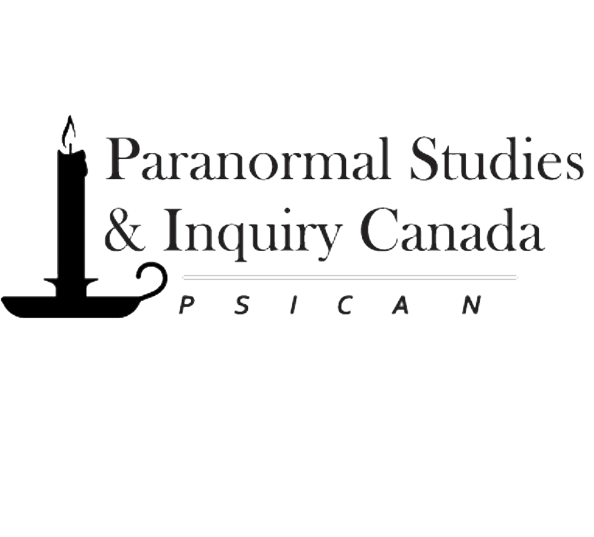Please note that if you are planning on visiting any of the locations listed within this article, most Ontario cemeteries are officially closed at dusk meaning visiting after closing (usually 8pm) is trespassing and therefore illegal. PSICAN strongly encourages visitors to be respectful of their surroundings and municipal by-laws.
What Lies Beneath: Niagara’s Haunted Cemeteries
The Niagara region of Ontario has a long tradition of hauntings. In fact, it’s widely regarded as the most haunted part of Canada. Niagara’s history seems to come alive in its cemeteries, from Butler’s Burial Ground in Niagara-on-the-Lake to Oakwood Cemetery in Wainfleet.
There are two haunted cemeteries in the town of Niagara-on-the-Lake. The first, Butler’s Burial Ground, is located at the end of Butler Street, along a dirt trail on the southwestern outskirts of town. The cemetery is named after John Butler (1728-1796), the founder of Niagara-on-the-Lake. He was the leader of an elite corps known as the Butler’s Rangers. So notorious were the Rangers that their coffins surfaced within months of burial. It’s not unusual to see misty figures or hear chilling sounds at Butler’s Burial Ground. Paranormal researchers have captured *orbs on film and EVPs on tape.
*(see webmaster's note at the bottom of the page)
St. Mark’s Cemetery was established in 1792, but previously used as a First Nations burial site. During the War of 1812, St. Mark’s Church was used as a hospital by the British. The American forces, who occupied the town in 1813, dug rifle pits and trenches in the cemetery, some of which can still be seen. There have been reports of ghostly soldiers (some with an amputated arm or leg), strange lights, disembodied screams, the commands or officers, and Native spirits. St. Mark’s Cemetery is located on Byron Street, east of King Street, in Niagara-on-the-Lake.
Niagara Falls’ Drummond Hill Cemetery is one of the most haunted cemeteries in North America. It was the site of the Battle of Lundy’s Lane on July 25, 1814. Drummond Hill is the highest point in the city of Niagara Falls, and it’s named after Gordon Drummond (1772-1854), who led the British troops to victory in the Battle of Lundy’s Lane. Drummond Hill Cemetery is also the resting place of Canadian heroine Laura Secord (1775-1868).
Drummond Hill Cemetery is said to be haunted by not one, but two sets of different soldiers from the War of 1812. The first group consists of five soldiers dressed in the uniform of the Royal Scots, limping across the former battlefield. The second group consists of three British soldiers in red uniforms, making their way up the hill. Drummond Hill Cemetery is located on Buchner Place, near the corner of Drummond Road and Lundy’s Lane.
Fort Erie has the distinction of two haunted burial grounds. The McAffee Cemetery on Thompson Road, south of Niagara Boulevard, is named after Samuel McAffee, a local farmer and preacher. According to local tradition, McAffee helped rebel leader William Lyon Mackenzie (1795-1861) escape to the United States after the failed Rebellion of 1837. It’s said that McAffee disguised Mackenzie as a woman and rowed him across the Niagara River to Buffalo. However, historians have pointed out that the man at the oars was probably David Douchman, McAffee’s hired hand.
In the late 1890s, settlers in the Pleasant Point area reported strange phosphorescent lights floating and bouncing over McAffee Cemetery. Horses are said to have shied and reared in passing the site. Some even claimed to have seen the apparition of an old man (perhaps Samuel McAffee) holding a lantern, wandering the grounds.
The so-called "Coloured Cemetery" is located on Curtis Road, east of Ridgemount Road, in Fort Erie. The earliest headstone at the cemetery dates to 1813. Following the death of landowner High Rose in 1845, a quarter acre was set aside as a burial ground in accordance with his will. The property was sold to the Dennahower family in 1864. The "Coloured Cemetery" is believed to be haunted by a black soldier from the War of 1812.
Oakwood Cemetery in Wainfleet is legendary for its infamous “Hopkins’ Tomb”. Samuel Hopkins was an Irish-born Port Colborne businessman whose colourful career included a trip to California in 1849 during the gold rush. He oversaw the construction of the large twin-columned mausoleum where his remains would later be sheltered.
Three accidents were linked to the so-called “curse” of Hopkins’ Tomb following an incident where three individuals tried to break into the mausoleum. The first of these individuals died in a car crash, another lost an arm in an accident, and the third lost a leg in a motorcycle accident. The apparition of Hopkins’ dog has been seen on the steps leading to the mausoleum. Some even claim to have seen the ghost of Samuel Hopkins himself, especially on the night of the spring equinox. Oakwood Cemetery is located on Lakeshore Road West, at Quarrie Road.
For more information on these cemeteries and other hauntings, I suggest the following sources:
Colombo, John Robert. Mysteries of Ontario. Toronto: Hounslow Press, 1999.
Da Silva, Maria and Andrew Hind. Ghosts of Niagara-on-the-Lake. Toronto: Dundurn Press, 2009.
Lessard, Arlene. “The History and Horrors of Hopkins’ Tomb.” Alive and Well, November 1981.
Ray, Ab. “Restoration of Old Cemetery Recalls McAfee Ghost Legend.” Niagara Falls Review, October 27, 1954, http://historic.library.forterie.ca
Thay, Edrick. Haunted Cemeteries: True Tales from Beyond the Grave. Edmonton: Lone Pine Publishing, 2004.
Toronto Ghosts and Hauntings Research Society, http://www.torontoghosts.org
* Webmaster's note: Please note that photographic orbs can easily be duplicated by natural means and are widely considered to be explainable, and not evidence of the paranormal.


